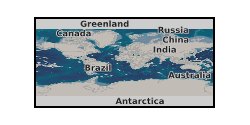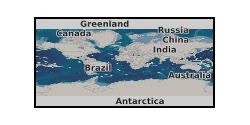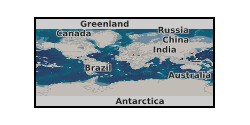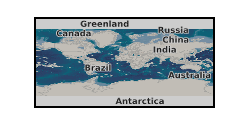University of Kent
Type of resources
Available actions
Topics
Keywords
Contact for the resource
Provided by
Years
Formats
Representation types
Update frequencies
Resolution
-

The data is collected in North China Electric Power University (NCEPU) on a 1-inch bore, gas-liquid two-phase, high pressure (up to 72bar), ambient temperature CO2 flow test rig from 19th May to 3rd June 2016. Single phase gas and liquid information are provided by Coriolis meter and mixed together. Then a vertical Coriolis meter is used to measure the two-phase mixture together with a DP transmitter measuring differential pressure across the vertical Coriolis meter under test. UKCCSRC Call 2 project: CO2 Flow Metering through Multi-Modal Sensing and Statistical Data Fusion. Grant number: UKCCSRC-C2-218. Published papers: 1) Mass flow measurement of two-phase carbon dioxide using Coriolis flowmeters (https://doi.org/10.1109/I2MTC.2017.7969891). 2) Mass flow measurement of gas-liquid two-phase CO2 in CCS transportation pipelines using Coriolis flowmeters (https://doi.org/10.1016/j.ijggc.2017.11.021).
-

This poster on the UKCCSRC Call 2 project CO2 Flow Metering through Multi-Modal Sensing and Statistical Data Fusion was presented at the UKCCSRC Manchester Biannual Meeting, 13.04.2016. Grant number: UKCCSRC-C2-218.
-

Measurement and monitoring of CO2 flows across the entire CCS chain are essential to ensure accurate accounting of captured CO2 and help prevent leaking during transportation to and from storage sites. This particular R&D need has been identified as one of the highest priority areas in the latest APGTF Strategy Report and in the UKCCSRC RAPID Handbook as well as in a recent study by NEL. The need for addressing measurement uncertainty and its importance for CO2 flows is a key factor in the CCS chain. The accurate measurement of CO2 is also vital to lift the strict regulations from legislative bodies off the full deployment of CCS and create a more positive public perception towards CCS. In addition, it is imperative to investigate the flow metering aspects of CO2 to inform the legislators and regulators and to have this underpinning knowledge available to the providers of the design, build and operation of CCS plants. In this project a cutting-edge technology for the measurement of CO2 flows in CCS pipelines will be developed. The technology will incorporate multi-modal sensing and statistical data fusion techniques. General-purpose flow sensors, including Averaging Differential Pressure, ultrasonic and Coriolis together with temperature, pressure and electrical impedance transducers, will be utilised to create a prototype multi-modal sensing system. A statistical data fusion method based on Bayes' rule for combining prior and observation information will be developed to integrate the outputs of the sensors and transducers. Various statistical data fusion models will be developed off-line and optimal data fusion models will be selected for on-line implementation. Meanwhile, a dedicated CO2 mass flow reference platform will be built using precision weighing techniques and its uncertainty will be established. Extensive experimental work will be conducted on the CO2 mass reference platform after implementing the on-line statistical data fusion models. The multi-modal sensing system will then be extensively tested under controlled flow conditions which resemble practical CCS conditions. The measurement uncertainty for each selected data fusion model will be reported together with the implication of costs, which will be a very informative source for users, manufacturers and researchers. Finally, the multimodal sensing system will be scaled up with the support of the industrial partner and evaluated on their large line (>DN250) flow test facility under simulated flow conditions. Effects of impurities in the CO2 flow on the performance of the flow measurement system will also be studied. Findings from the project will be disseminated to the UKCCSRC and a wider community. Grant number: UKCCSRC-C2-218.
-
This data set provides a spatial stratification of forest cover into discrete vegetation classes according to the High Carbon Stock (HCS) Approach. The data set covers the Stability of Altered Forest Ecosystems (SAFE) project site located in Sabah, Malaysian Borneo. Data were collected in 2015 during a project which was included in the NERC Human-modified tropical forest (HMTF) programme. Full details about this dataset can be found at https://doi.org/10.5285/81cad1ef-b5cc-4592-a71f-204a5d04b700
-
This data set contains stacked detection matrices for 28 recorded mammal species across 115 sampling locations at the Stability of Altered Forest Ecosystems (SAFE) project site located in Sabah, Malaysian Borneo. Information for each camera trap sampling location, including spatial information and sampling effort is included. Data were collected in order to determine the contribution of carbon-based policies to biodiversity conservation in agricultural land-use mosaics. These data are essential to the development of the occupancy detection matrix. Data were collected in 2015 during a project which was included in the NERC Human-modified tropical forest (HMTF) Programme. Full details about this dataset can be found at https://doi.org/10.5285/62774180-ae72-4873-9482-e8be3935f533
-

UKCCSRC Flexible Funding 2020. Experimental data are the acoustic emission (AE) signals collected with three AE sensors when CO2 leak from a CO2 storage cylinder under different pressures. '5MPa_20kgh-1' means the data was collected when the pressure was 5MPa and the leakage rate was 20 kg/h. The sampling frequency of AE signals is 3MHz. UKCCSRC Flexible Funding 2020: Monitoring of CO2 flow under CCS conditions through multi-modal sensing and machine learning.
-

UKCCSRC Flexible Funding 2020. The experimental data was collected on a 1-inch bore gas-liquid two-phase CO2 flow rig in real time. The first column of the table is the time stamp. The second to 19th columns are the mass flowrates, temperatures, densities and tube frequencies from Coriolis flowmeters installed on the gas phase section, liquid phase section, horizontal test section and vertical test section, respectively. The last column of the datafile is the reading from the differential pressure (DP) transducer installed across the Coriolis flowmeter on the horizontal test section. UKCCSRC Flexible Funding 2020: Monitoring of CO2 flow under CCS conditions through multi-modal sensing and machine learning.
-
Bird community data from fixed point count stations generated by experienced ornithologists in Borneo and the Wallacean islands of Sulawesi (Buton), Seram, Buru, Talaud and Sangihe. Bird surveys were undertaken between 2016 and 2020, with work on any given island lasting ~3 months, except for Borneo where surveys were undertaken across 3 years (2014 – 2016). Surveys were repeated four times at each site on Sulawesi (Buton), Seram, Buru and once each on Talaud and Sangihe. The dataset comprises the aggregated counts from multiple surveys of the same point count sites, and assigned to individual bird species, landscape and island. Full details about this dataset can be found at https://doi.org/10.5285/87f36a61-ca79-40c6-b781-8936ead162cc
-
The semiochemical experiment data were collected from novel laboratory, semi-field- and field-scale bioassay experiments taking behavioural observations and counts of pest insects and their natural enemies in the field. Crop yields were taken. Chemical analyses were also done using air entrainment. The study is part of the NERC Rural Economy and Land Use (RELU) programme. Despite the widespread concerns regarding the use of pesticides in food production and the availability of potentially viable biological pest control strategies in Integrated Pest Management (IPM) systems, the UK cereal crop production remains a bastion of pesticide use. This project aimed to understand further the reasons for this lack of adoption, using the control of summer cereal aphids as a case study. Reasons for this lack of adoption of biocontrol remain a complex interplay of both technical and economic problems. Economists highlight the potential path dependency of an industry to continue to employ a suboptimal technology, caused by past dynamics of adoption resulting in differential private cost structures of each technique. Further, risk aversion on the part of farmers regarding the perceived efficacy of a new technology may also limit up-take. This may be particularly important when IPM rests on portfolios of technologies and when little scientific understanding exists on the effect of portfolio and scale of adoption on overall efficacy. Faced with this, farmers will not adopt a socially superior IPM technology and there exists a clear need for public policy action. This action may take the form of minimising uncertainty through carefully designed research programs, government funding and dissemination of the results of large-scale research studies or direct public support for farm landscape and farm system changes that can promote biocontrol. This research looked at alternatives to the use of insecticides in arable agriculture and the difficulties facing producers in switching over to them. Two approaches were explored: habitat manipulations, to encourage predators and parasites, and using naturally occurring odours to manipulate predator distribution as model technologies. Scale and portfolio effects on biocontrol efficacy have been investigated in controlled and field scale experiments. Aim is to improve the way research and development of new products and techniques are carried out to help break the dependence on chemical pesticides. Conservation biological control experiments data investigating the effect of wild field margins on pests and predators, from this same research project, are also available. In addition, socio-economic research has been used to help direct natural science research into the development and evaluation of a combination of habitat management and semiochemical push-pull strategies of appropriate scale and complementarity to yield viable, commercially attractive and sustainable alternatives to the use of insecticides in cereal crop agriculture. These socio-economic data are available through the UK Data Archive under study number 6960 (see Supplemental). Further information and documentation for this study may be found through the RELU Knowledge Portal and the project's ESRC funding award web page (see Supplemental).
-
Datasets consist of monitoring data on ecosystem properties (17 variables) and biodiversity (21 variables), collected between 2003 and 2019 from the tropical peatland of the Natural Laboratory of Peat-swamp Forest special research zone in Sebangau National Park, Central Kalimantan, Indonesia. The dataset includes 23 data files. These data files represent results from comparisons of ecosystem property and biodiversity variables over space between new burn, old burn and unburned forest conditions, including: (a) effect sizes resulting from a hierarchical mixed effects meta-analysis; and (b) proportional changes resulting from a generalized linear mixed-effects model. They also include datasets relating to variability ecosystem property and biodiversity variables over time in relation to fire incidence within the wider landscape, including (c) time-series data for ecosystem properties aggregated by site and season, and occupancy detection matrices biodiversity for biodiversity variables; and (d) species richness and abundance estimates aggregated at the site level. Full details about this dataset can be found at https://doi.org/10.5285/24e8e9c6-f9fa-4758-951f-9160bb0dde6e
 NERC Data Catalogue Service
NERC Data Catalogue Service